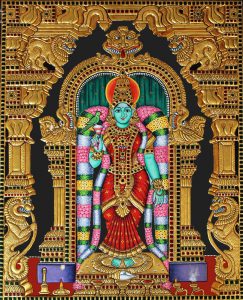This famous tourist destination derives its name from the virgin Goddess Kanyakumari. According to one legend, Devi Kanya who is an avatar of Goddess Parashakti, to secure Lord Shiva’s hand in marriage did penance here. She could not achieve what she wished for; she vowed to remain a Virgin (Kanya) forever. The multi-colour of the beach sands are linked to the mythological story of Sita. It is said that the backbone area of Sati Devi’s corpse fell here.

Goddess Kanyakumari
Kanyakumari was once referred to as the Alexandria of the East as it is a great centre for arts, culture, civilization and pilgrimage. It was during the early part of the eight century AD that Islam entered into the southern part of India through the sea route. Later on, during the 52 AD, St. Thomas, one of the apostles of Christ, brought in Christianity to this area. Islam, Christianity and Jainism, have contributed to the architectural wealth and literary heritage of this place. The Cholas, the Cheras, the Pandyas and the Nayaks, who were some of the great rulers of South India, have controlled Kanyakumari. In the year 1949, Kanyakumari became the part of the Travancore-Cochin State.
